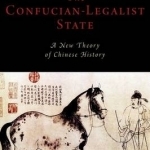The Confucian-Legalist State: A New Theory of Chinese History
BookThis item doesn’t have any media yet
2015 | History & Politics
The Confucian-Legalist State analyzes the history of China between the 11th century BCE and 1911 under the guidance of a new theory of social change. It centers on two questions. First, how and why China was unified and developed into a bureaucratic empire under the state of Qin in 221 BCE? Second, how was it that, until the nineteenth century, the political and cultural structure of China that was institutionalized during the Western Han dynasty (206 BCE - 8 CE) showed great resilience, despite great changes in demography, socioeconomic structure, ethnic composition, market relations, religious landscapes, technology, and in other respects brought by rebellions or nomadic conquests?
In addressing these two questions, author Dingxin Zhao also explains numerous other historical patterns of China, including but not limited to the nature of ancient China's interstate relations, the logics behind the rising importance of imperil Confucianism during the Western Han dynasty and behind the formation of Neo-Confucian society during the Song dynasty (960-1279 CE), the changing nature of China's religious ecology under the age of Buddhism and Neo-Confucianism, the pattern of interactions between nomads and sedentary Chinese empires, the rise and dominance of civilian government, and China's inability to develop industrial capitalism without the coercion of Western imperialism.
Related Items:
| Published by | Oxford University Press Inc |
| Edition | Unknown |
| ISBN | 9780199351732 |
| Language | N/A |
Images And Data Courtesy Of: Oxford University Press Inc.
This content (including text, images, videos and other media) is published and used in accordance
with Fair Use.
